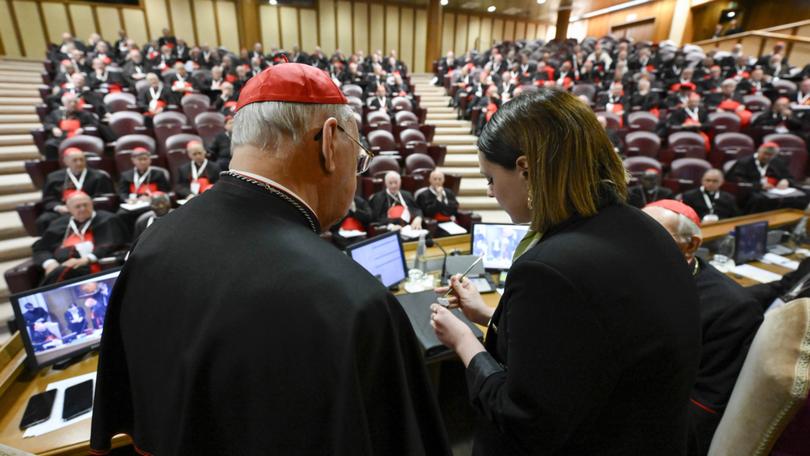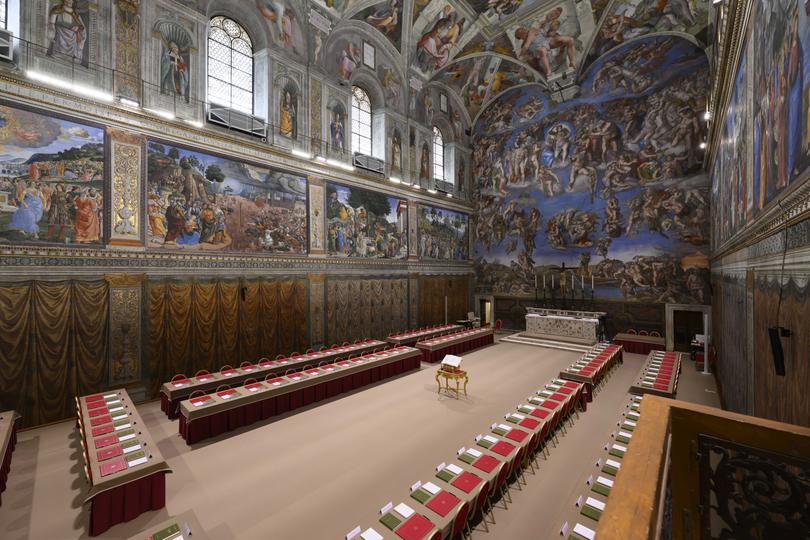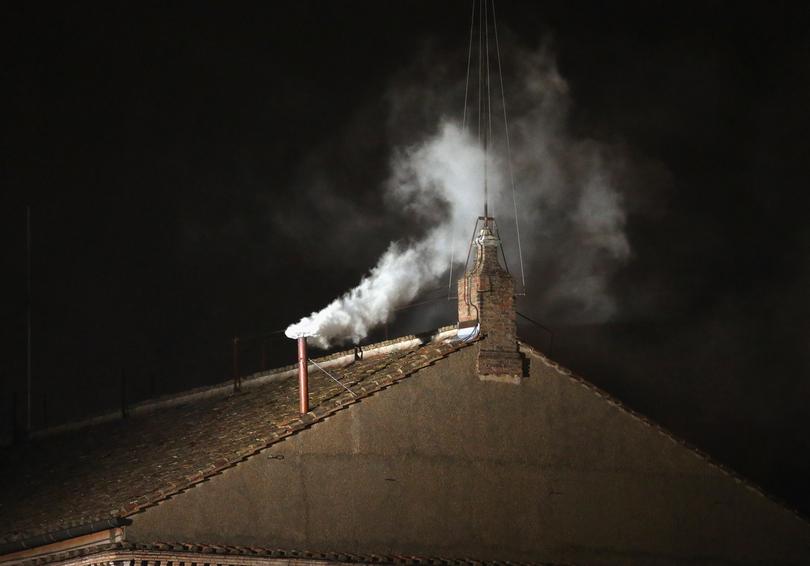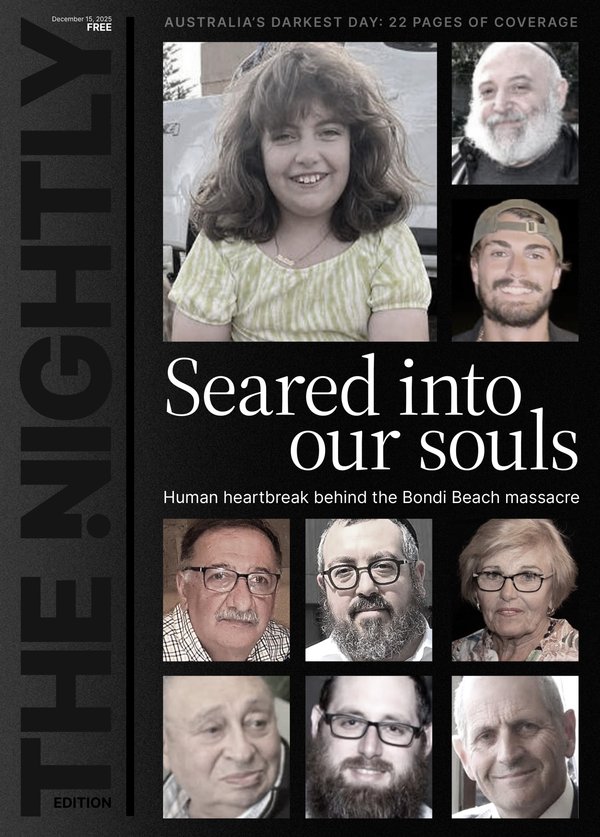THE WASHINGTON POST: Inside the conclave: A guide to how the next pope will be elected

Electing a pope comes with a mix of ancient tradition, religious rituals, political machinations and some mystery.
Beneath the domes and ancient walls of Vatican City, a quiet drama will unfold. Cardinals from around the world are gathering here, and many will be staying in Domus Sanctae Marthae, a five-story guesthouse built in 1996 to house church officials during a conclave. Here they will pray, reflect and quietly forge the alliances that could define the next chapter of the Catholic Church.
The voting will be held tonight in the Sistine Chapel, located inside the Apostolic Palace, typically the residence of the pope. The newly elected pope will be introduced to the world from the balcony of St. Peter’s Basilica overlooking St. Peter’s Square.
Sign up to The Nightly's newsletters.
Get the first look at the digital newspaper, curated daily stories and breaking headlines delivered to your inbox.
By continuing you agree to our Terms and Privacy Policy.The 267th pope is set to inherit a deeply divided church: There are those who will want the new leader to remain on Pope Francis’s reformist path and those who would want the next pontiff to return to a more traditional style.
The conclave, which will begin May 7, local time, is the largest and least predictable in decades. There are 133 possible cardinal electors.
Voting will continue until a candidate wins a two-thirds majority. There is one vote on the first day, and four votes each day afterward. If the Roman pontiff is not chosen in three days, the cardinals may pause for prayers and informal discussions for one day. The previous two conclaves were decided in two days.
This conclave will also be the most diverse in the history of the Catholic Church, said Mathew Schmalz, a professor of religious studies at the College of the Holy Cross, a liberal arts college in Worcester, Massachusetts. General congregations organised before the conclave to discuss the Catholic Church’s challenges will be an opportunity for the cardinals to get to know each other, Schmalz said.
Shrouded in secrecy
Before the conclave begins, the Sistine Chapel will be set up to shield cardinals from outside influence while they vote, said Daniel Cosacchi, a papal expert at the University of Scranton, a Catholic and Jesuit university in Pennsylvania.
The Sistine Chapel is home to Michelangelo’s 500-year-old frescoes, including the The Creation of Adam.
The altar wall, the heart of the chapel almost entirely covered by Michelangelo’s second iconic work - The Last Judgement, is where the cardinals will come to place their vote, said Professor Cosacchi.
The chapel will be inspected by technical experts to ensure no audiovisual equipment has been surreptitiously placed inside. It will then become a sealed area until the election’s conclusion.
A wooden floor will be added to hide security devices like signal jammers and to give the cardinals a flat surface to walk on when they vote.
The high windows of the Sistine Chapel will be boarded up to fully isolate the cardinals.
There will be a pair of stoves and a stovepipe in the far end of the chapel, with a connected chimney.
At the end of each vote, the ballots are carried to the stoves and burned with chemicals that produce white or black smoke. Black smoke would indicate that the cardinals have not yet reached a two-thirds majority. White smoke means a successor has been chosen.

As they write in their preferred candidate, the cardinals will sit in what’s known as choir formations: two-three rows on either side of the chapel.
Nine cardinals will help with the voting. This includes three scrutineers, whose job includes counting, recounting, tying up and then burning the ballots; three infirmarii, who are charged with collecting the votes of the sick; and three revisers who check both the ballots and the notes made by the scrutineers to ensure no mistakes have been made.
The scrutineers sit in front of the altar, under Michelangelo’s The Last Judgement, behind a table carrying three urns that will be used as ballot boxes or voting receptacles.
Inside the chapel
The cardinals will enter the Sistine Chapel singing the hymn “Come Holy Spirit,” after which they will vow to hold the secrets of the conclave process, said Professor Schmalz of the College of the Holy Cross.
Then, the master of papal liturgical celebrations will announce “Extra omnes,” or “Everybody out,” in Latin, leaving only voting cardinals inside.
The doors of the Sistine Chapel will be locked and the voting will begin.
One by one, the cardinals will walk up to the scrutineers and take an oath in Latin. Each will then place his ballot in the urn. The cardinal then bows to the altar and returns to his seat, giving way to the next cardinal.
Cardinals are urged to disguise their handwriting while filling out the ballot to maintain the anonymity of the process, said Professor Cosacchi from the University of Scranton. The Latin on the ballot translates to: “I choose as Supreme Pontiff.”
After each cardinal has voted, in order of rank, the scrutineers begin counting the votes.
One scrutineer shakes the urn to mix up the ballots. Another transfers the ballots from the first urn to the second while counting them.
Once all votes are cast, a scrutineer starts tallying the votes, announcing the name of each cardinal who has received a vote. A second scrutineer repeats this process.
If the vote count of the first and second scrutineers match, the third scrutineer threads a needle through each ballot and ties them together, marking the end of each counting process.
Pope Benedict XVI and Pope Francis were elected in four and five rounds of voting, respectively.
White smoke
When the voting process leads to a winner, the cardinals approach him and the dean of the College of Cardinals asks: “Do you accept your canonical election as Supreme Pontiff?”
If he says yes, he becomes the leader of the Roman Catholic Church. They then ask him the name by which he wants to be known.
In this conclave, the current dean is over the eligible voting age and so the election will be led by Cardinal Pietro Parolin, the Vatican’s secretary of state, said Schmalz.
After the master of papal liturgical celebrations prepares a document stating the acceptance and the new name of the pope, the final ballots are burned with chemicals to emit white smoke from the chimney of the Sistine Chapel.

The world will know a pope has been chosen, but his identity will remain confidential inside the Apostolic Palace.
After a liturgical ceremony in which the cardinals pray together and after meeting each cardinal in the chapel, the new pope will leave to go to the Room of Tears, said Cosacchi.
In the Room of Tears, the pope is fitted in his papal garments. Each pope decides which papal garments to wear for his first appearance. Francis, who wore only white garments to the balcony, was different from Benedict, who wore a red mozzetta (a short cape worn on the cassock) and a red and gold stole.
A white cassock, a red or white mozzetta and a skullcap or zucchetto are the basic garments that the incoming pope may choose. The pope may also carry a ferula, a staff with a cross or a crucifix at its end.
The pope would then appear in the balcony of St. Peter’s Basilica at least an hour after accepting the papacy.
© 2025 , The Washington Post
